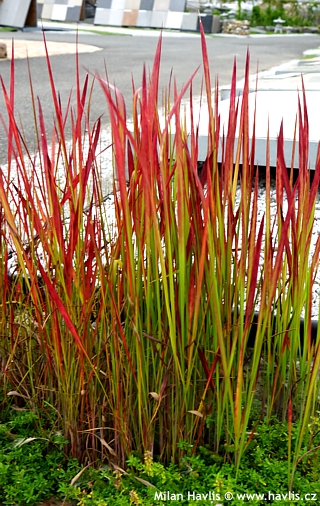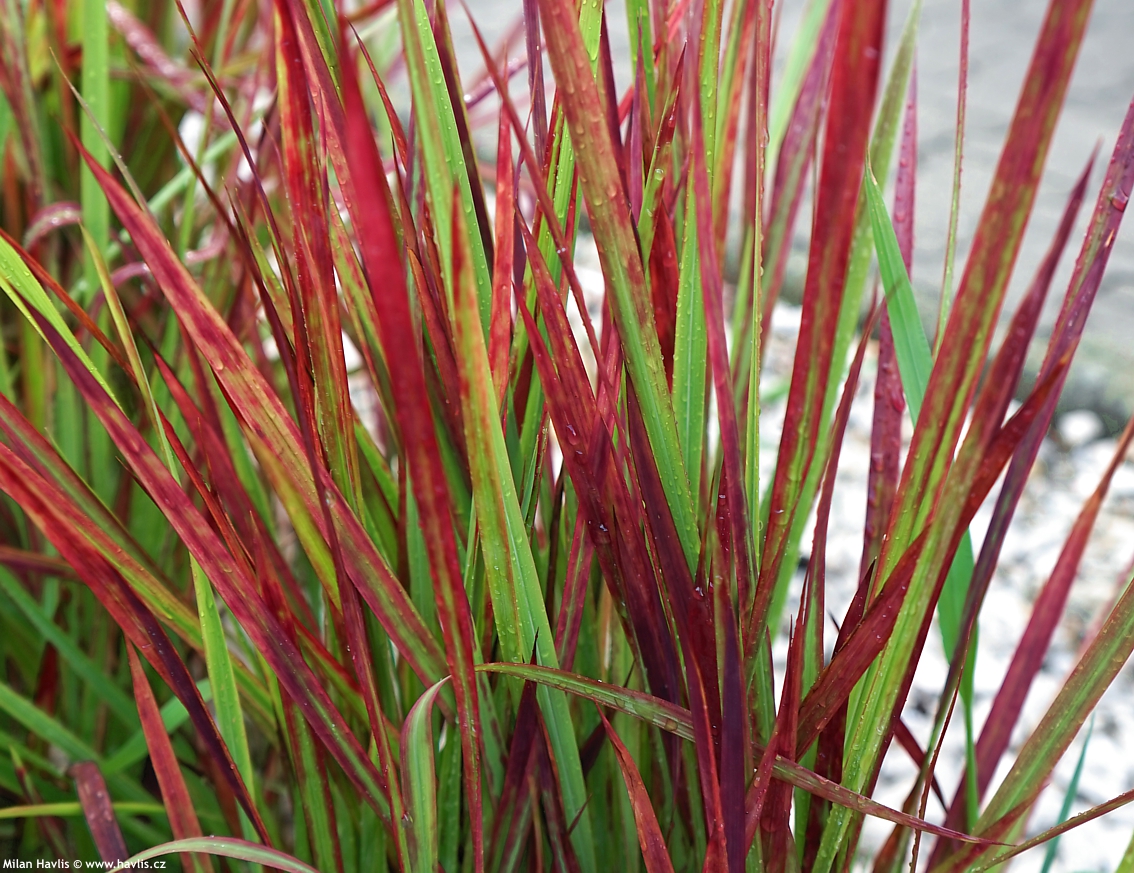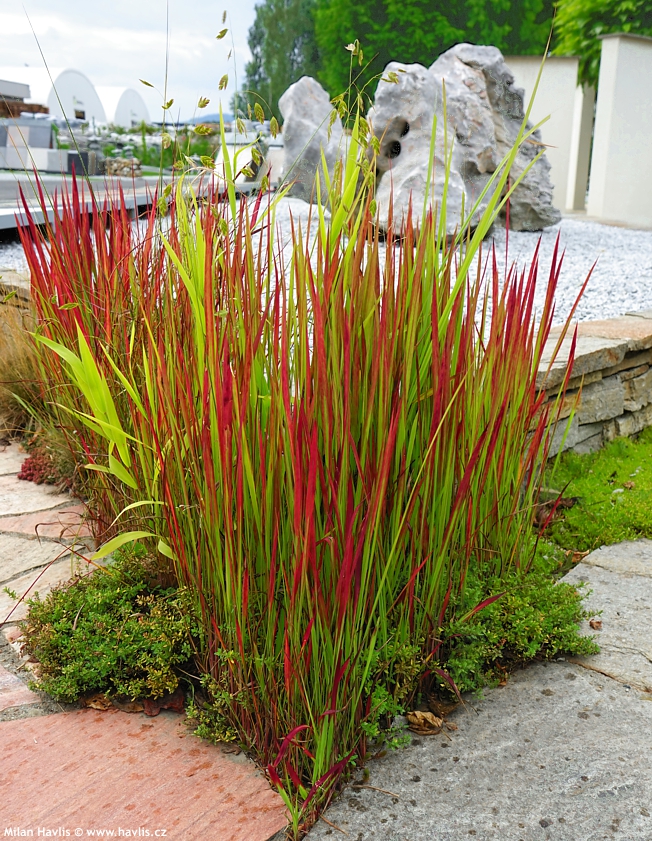Imperata cylindrica 'RED BARON' Cogongrass, Japanese blood grass, kunai grass


Fortunately, the red-leaved form of imperata does not get invasive and rightfully belongs among the most beautiful types of ornamental grasses. It is called imperata cylindrica, was first described by Carl Linnaeus in 1759, and apart from the species there is practically only one variety Red Baron. You may still come across another name Rubra, however, modern science has proven that it is the same variety, only with an older name.
It gained its popularity not only due to its lush color, but also its low growth and soft leaves. They are 40-60 cm high, about 2 cm wide, bright green with rich garnet red and burgundy tones towards the tips almost throughout the growing season. They are deciduous, form strictly upright clumps and do not flower (or set seeds). However, if you see a flower inside the bunch, it is clear that it grows from a stem with solely green leaves which exhibits a reversion to the original species that would show tendency to spread rapidly. Remove it mercilessly as soon as you spot it.
Red imperata is such a pretty grass that it looks good on its own – it doesn't require companion planting and makes a good show in small spaces. Nevertheless, you can use it in mixed beds, too, ideally with smaller types of ornamental grasses (carex, stipa, ophiopogon) or groundcovering perennials with contrasting leaves (gypsophila, saxifraga, sagina or similar moss-type plants, etc.).
Imperata is easy to grow. It will be happy in almost any well-drained soil. It tolerates poor soil without nutrients and summer drought. It will grow in full sun as well as partial shade where it performs well as to good leaf colour. Red Baron grows slowly, and for mass plantings and dense nests use more plants. In the spring, cut back the entire plant just above the ground level. Hardy to approx. -29 °C. (USDA zone 5).
Last update: 06-09-2024
Goods are shipped all over Europe. For Russia and U.K. and for further details please read about SHIPPING OPTIONS HERE.
Are you interested in a serious discount for orders NOV-FEB? Check your options here.
THE PRICES INCLUDE VAT of 15%. For quick conversion you can use 1 CZK = approx. 0.04 EUR
- STANDARD QUALITY - Plants of this group are 1st class quality with number of branches and overall density adequate to their size and age, considering they were container grown.
- DE LUXE QUALITY - This label guarantees a luxurious quality of manually selected plants that, compared to their height and age, are exceptionally dense and beautiful.
- EXTRA - These plants are usually mature and bigger specimens with exceptional overall appearance.
- STANDARD (as described in the plant form) means a tree with a trunk of 190-210 cm and a crown at the top, unless specified differently. The commercial size for trees is their girth measured in the height of 1m from ground.
- HOBBY - These plants are of the same quality as our standard-quality plants but younger and therefore cheaper.
- SHRUB - a woody plant with branches growing bushy from the ground level.
- HALF-STANDARD or MINI-STANDARD - a small tree with shorter trunk, its size is usually specified.
- FEATHERED - These are trees with branches growing already from the base of the trunk and up along the stem.
- GRASSES and PERENNIALS - Sizes given usually read the diameter of the pot or the clump, as specified.
















